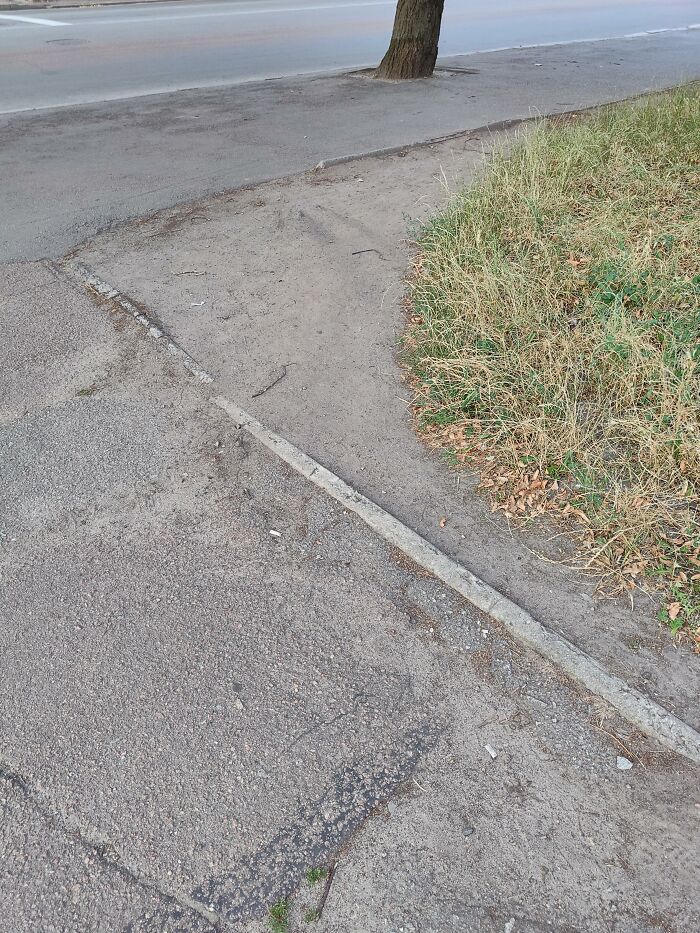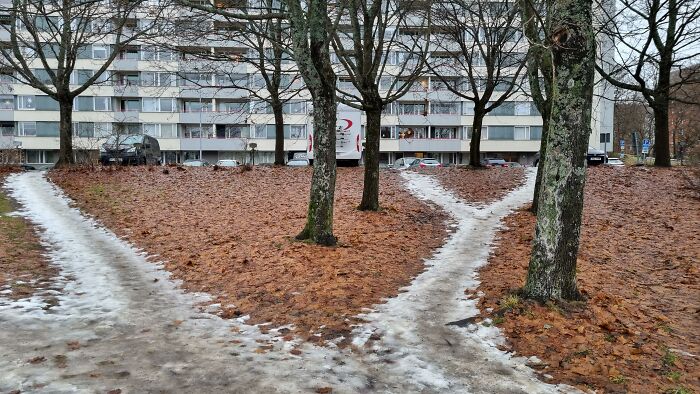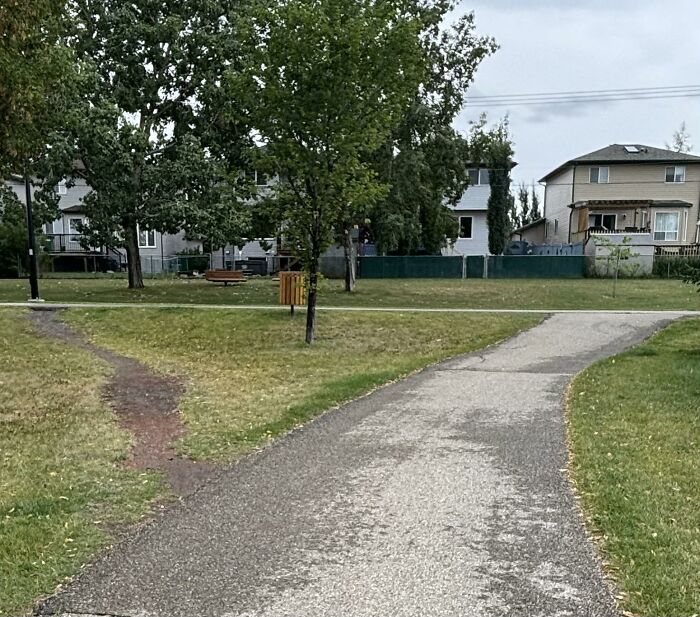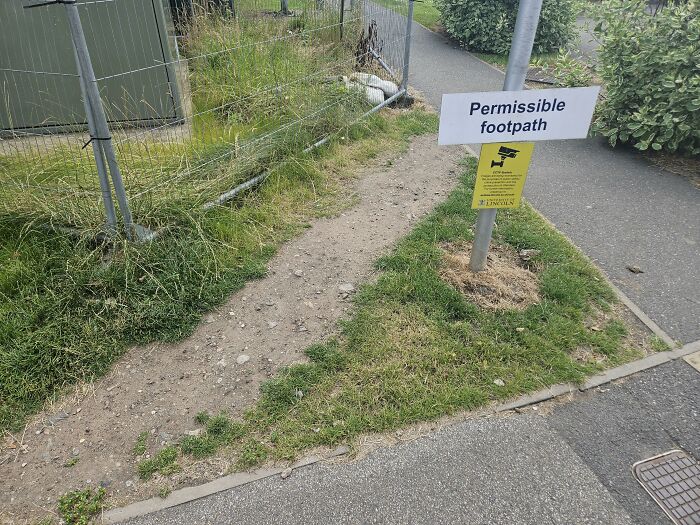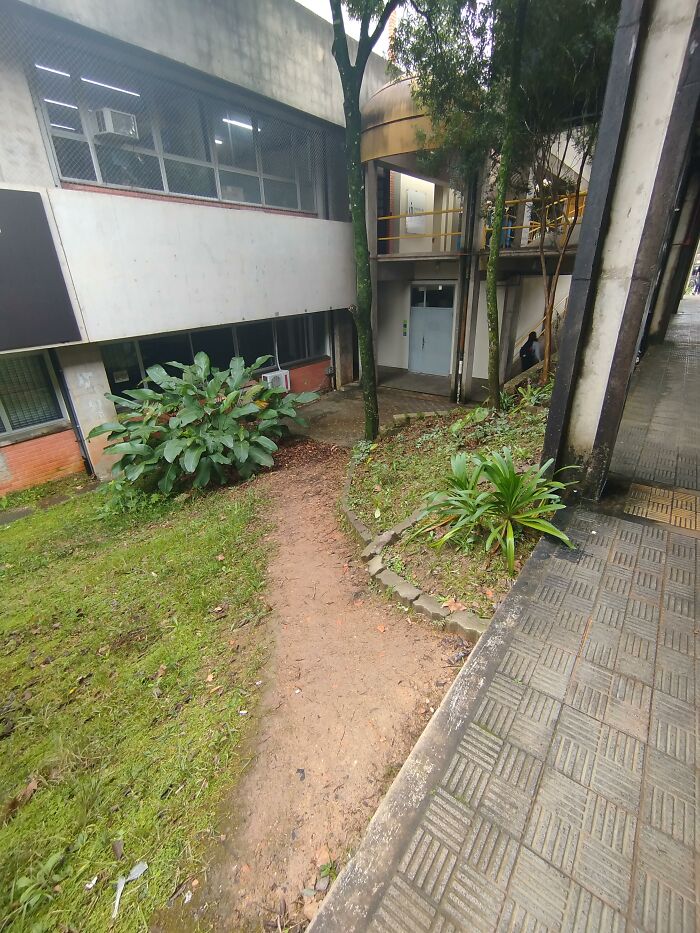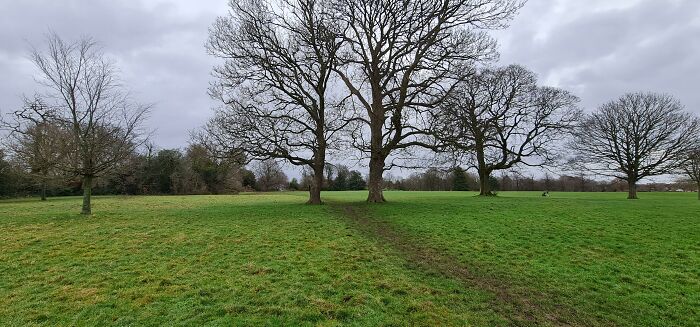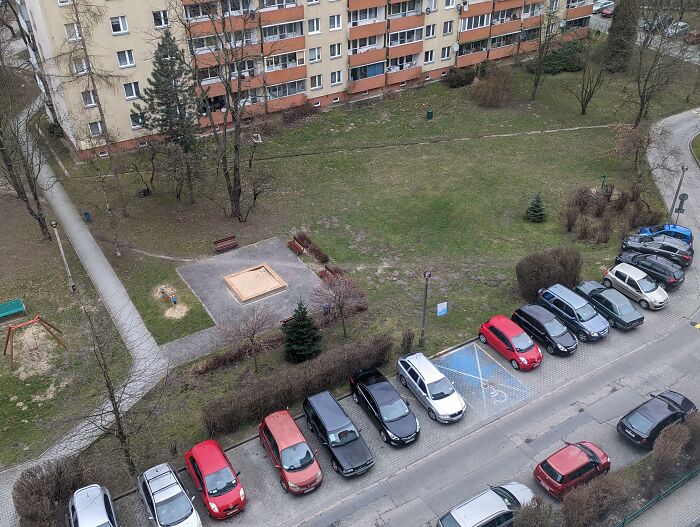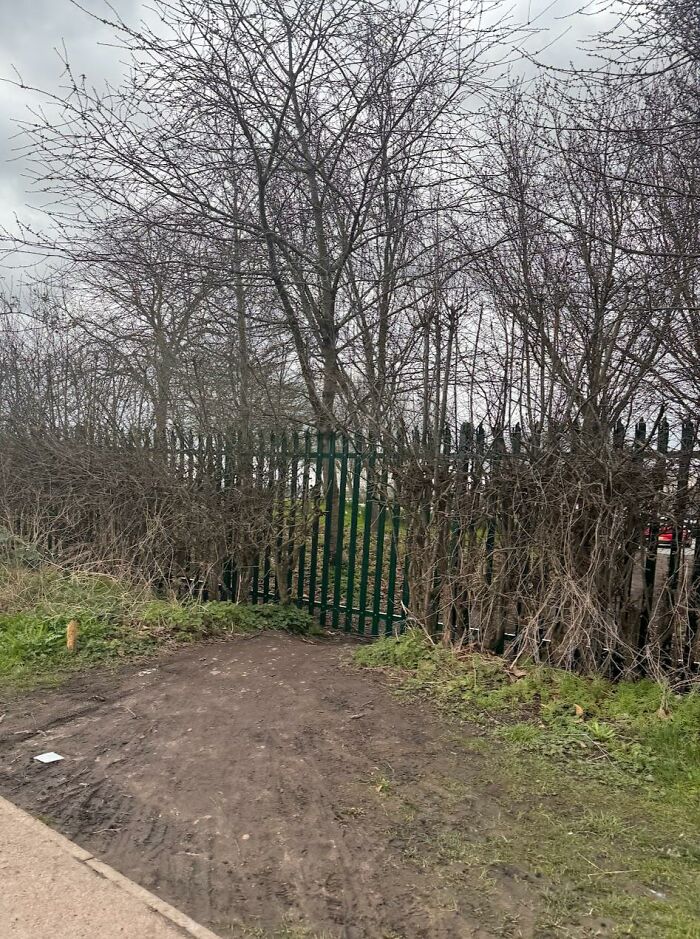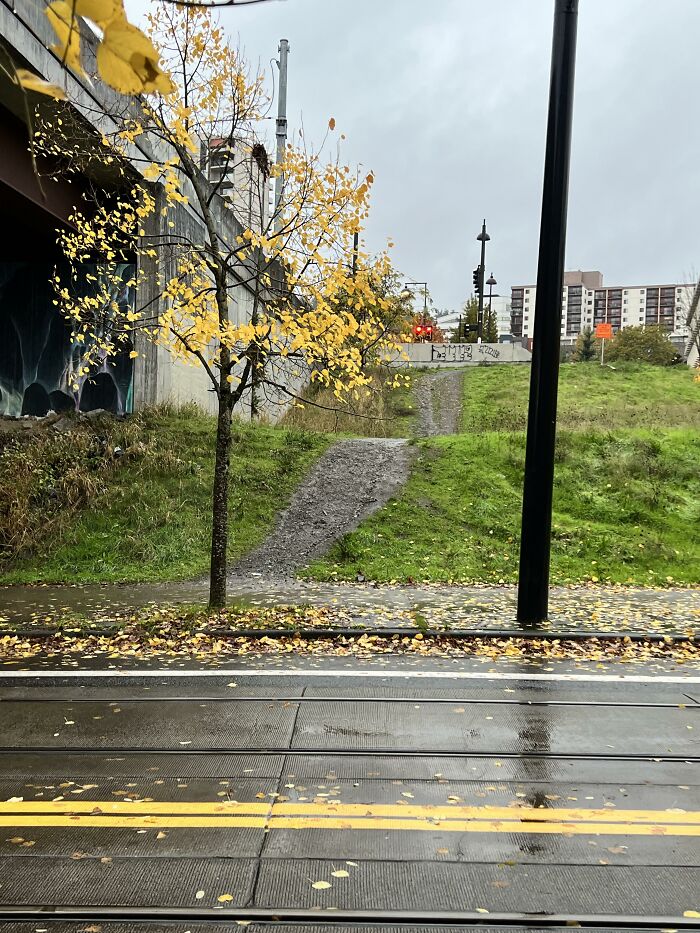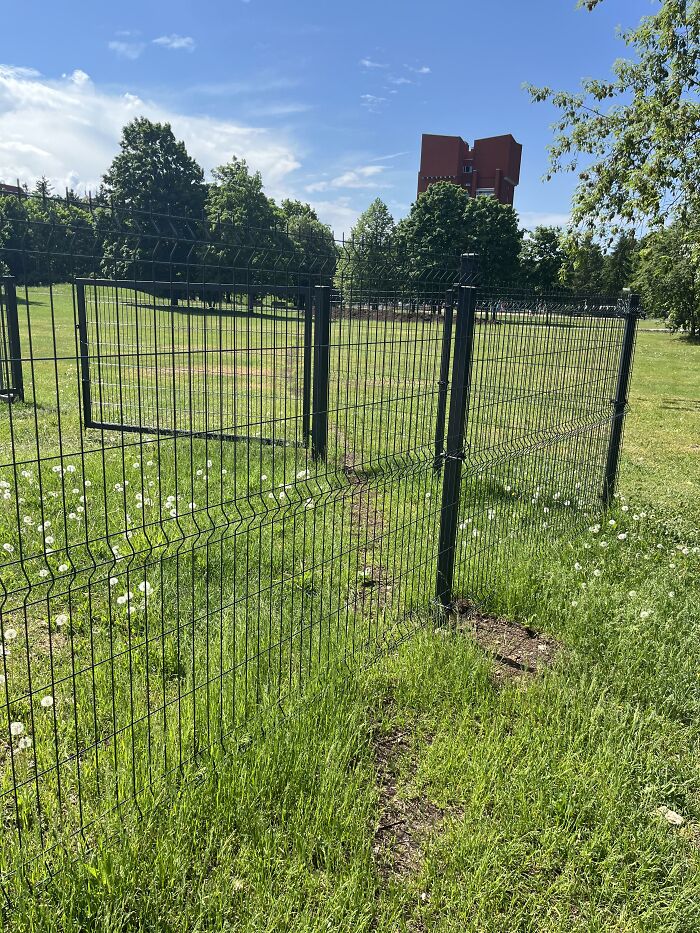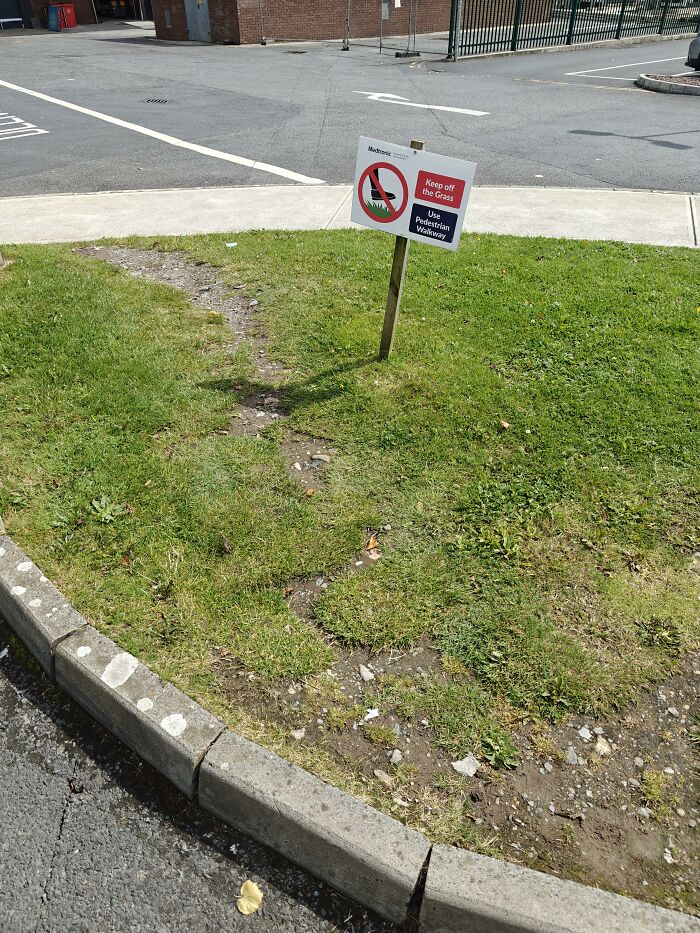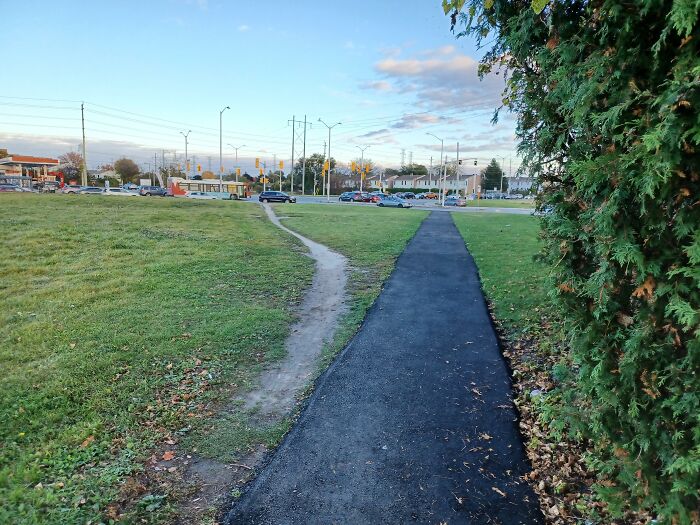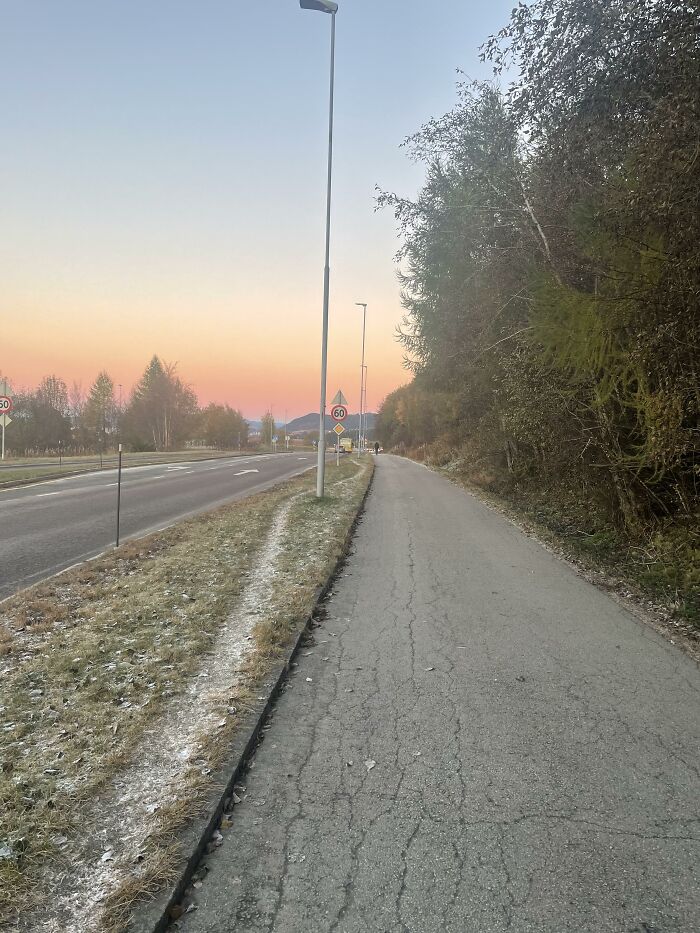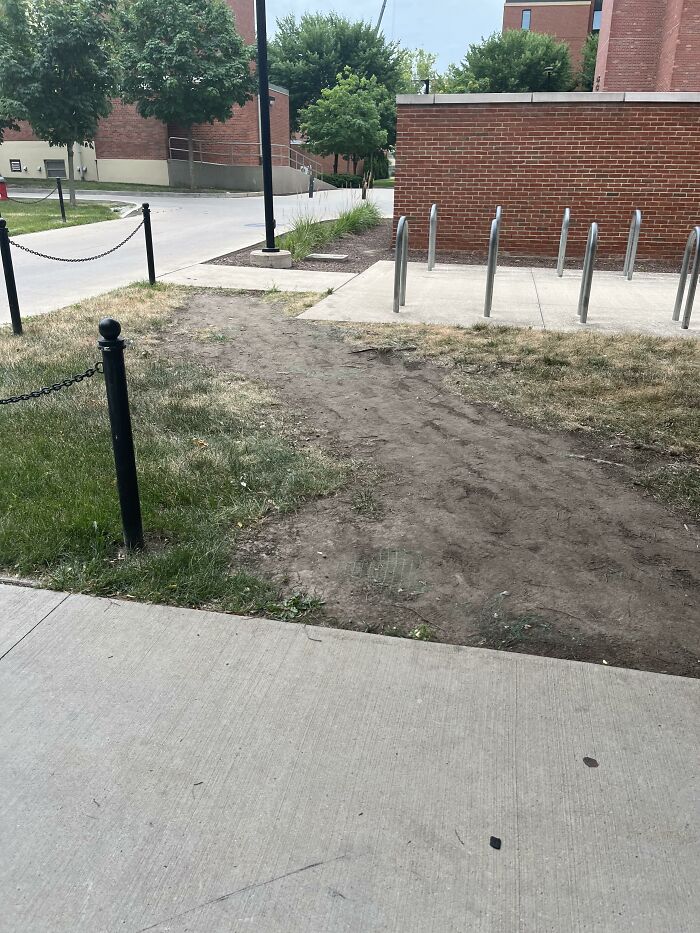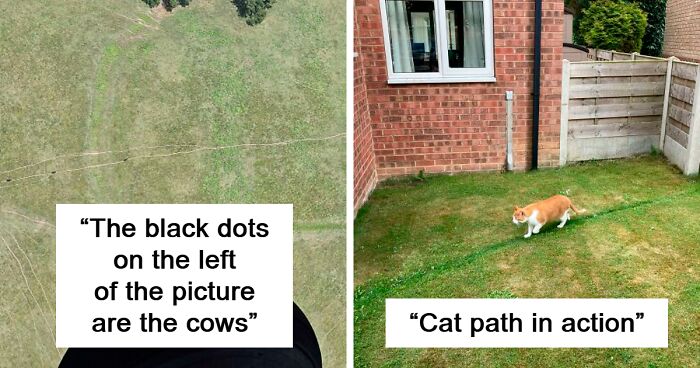
50 Times Urban Planners Failed To Understand People’s Needs, And It Resulted In ‘Desire Paths’ (New Pics)
Take a look around. The roads, houses, paths and apartments that we see and utilize every single day were all made and designed by people with a lot of education. Being an architect is not easy, after all. But sometimes no amount of research or education can prepare someone for what humans will actually choose to do.
The “Desire Path” online group is dedicated to those hilarious and wholesome examples of humans and animals actually making their own shortcuts. So get comfortable as you scroll through, upvote your favorites and share your thoughts and personal examples in the comments section below.
This post may include affiliate links.
Now This Is Awesome, Railway Desire Path
Abandoned railway through a forest that’s been walked for years.
Wrocław, Poland - The Desire To Be Further Away From The Road
Does This Count? It's The Path This Cat & The Local Raccoons Take Across My Backyard
A desire path, for those who are wondering, is an “organic,” human or animal-made trail. In short, when we, for example, take a walk in the woods, we tend to try to take the shortest route between location A and location B.
Naturally, there will always be obstacles, trees, branches, roots and rocks. So we will weave around them. Over time, frequenters of any path will discover, almost instinctively, the most efficient route from A to B. They will begin to frequent this path until the grass and other vegetation is worn out and it’s visible to the naked eye.
The Desire Path Got Paved Out And Shifted Half A Meter To The Left
I remember the original desire path, the city decited to add a sort of pavement but the distance of the stones from each other makes it extremely uncomfortable to walk on, nevermind if you have a stroller or something. It got sorted rather quickly, people just dont use the pavement.
Designed by people more focused on some aesthetic vision, rather than thinking of the people who would use it
They Gave In And Paved The Way People Have Been Using For 40 Years
It's crappy paving. You can tell they didn't want to. But it's a win!
Strongest Desire Path I’ve Ever Seen
You can see similar examples of this at home. If you have a set of drawers, there will no doubt be at least one that you use more often. Depending on its age and materials, the handle might be more worn down. The important part of a desire path over a “regular” path is that it’s not planned. It is simply the culmination of months or even years of humans just walking.
The Bricks Are A Pain In The Feet
Cat Path In Action
Tiny Path To Avoid The Bumps
Speed bumps on a BIKE PATH instead of the ROAD where they should be. Typical idiocy.
Indeed, it’s actually quite easy for us to accidentally make a desire path. This is why some national parks insist on folk’s staying on the designated trails, even if there is no risk from wildlife or other dangers. The Leave No Trace program is an example of this. Groups of humans walking repeatedly over something will wear it down, there are no two ways about it.
Path From A Tram Station To A McDonald's Restaurant. They Even Built Stairs
The Field Next To Where I Live In Edinburgh Is Filled Little Desire Paths
Joplin, Mo
The examples here are perhaps more extreme, as once, say, concrete is laid down, it’s unlikely that a city or property owner will tear it up just to accommodate some folks who are walking. However, recently, some cities have decided to, instead, incorporate desire paths into walking networks, as they organically reveal where humans actually want to go.
Desire Path Around A Roundabout In My City
They Can’t Live With Their Own Failure
Infinite Puddle Desire Path
I have one of those in my neighborhood too. The sidewalk is either flooded or slick and muddy. Everyone goes around, now the desire path is slick and muddy
This comes out of a more modern approach to urban design and architecture, where intuitive processes are part of anything that is being built. One 2006 study even suggested that businesses should do their utmost to incorporate desire lines into their properties, for example, the layout of a store or even the paths around a parking lot.
Found This Cheeky One Walking The Doggo
A Very Belgian Solution In Antwerp
Bizarre Path In Geelong Australia
After all, these are very clear indications of how humans, en masse, actually behave and businesses would be wise to pay attention. Some call this the wisdom of the crowd, where a variety of people, independently, make similar decisions. Naturally, humans are not actually dumb, we all tend to make rational choices with the options in front of us.
Small But Worthy (Illinois)
My Dog's Everyday Path
As It Turns Out, Cows Have Desire Paths, Too! The Black Dots On The Left Of The Picture Are The Cows. Taken From A Low Flying Aircraft
Finland, for example, takes this very seriously. After the first snowfall, planners will visit parks and pay attention to where the first footprints are left in the snow itself. After all, snow covers the “official” path, which may or may not correlate to where people actually want to go. These findings are then used to update or even redesign the parks.
You Cannot Stop The Path
The 7 stages of desire path resistance are shock, denial, anger, bargaining, depression, testing, and acceptance.
High Volume Interchange
Wow, that's more than a desire path on the left. It's a two-lane-high-traffic-pave-it-already path.
No One Wants To Use The Stairs At The End Of The Bridge
Quite high-brow graffiti. Central dogma of genetics, DNA -> RNA -> Protein.
Load More Replies...My guess is that people riding bikes is a substantial portion of the reason for the paths.
It would be a lot easier to climb up the stairs if there is snow or ice. Trying to walk up even a slight incline when ice is involved is a f*****g nightmare. I've had experience with both and I would rather chance the stairs then sliding down or trying to walk uphill on a path like that.
Load More Replies...Importantly, animals do this as well! After all, why would a deer care about the wonderfully symmetrical (yet inefficient) lines city planners have made on a map. Animals are creatures of habit just like humans, so it’s not at all impossible to find paths that your local wildlife has pressed into the dirt.
I Wonder If Anyone Actually Goes Through The Gate
Steep Desire Path, To Avoid A Slick Gravel Section. Lake District, UK
People Avoiding A UK Superstition - Walking Under Street Signs Is Bad Luck
Vienna. Austria
"The length of any side of triangle will always be less than the sum of the lengths of the other two sides." - Euclid
A Path Where People Don't Want To Go Side To Side
The Rare "Convenient Detour" Desire Path
That's probably cyclists. Those barriers are designed to slow us down. But it's not very useful if you can just go around
Humans Don't Like The Nice Windy Path
Path Of Traffic Violation
This Desire Path Around A Truck That’s Always Parked In The Same Place At My Work
That's not a desire path that's a trying to get around the badly parked lorry path.
The Crispest Desire Path I Have Ever Seen Irl
Desire Path Accepted
Flower Desire Path
Government Mandated Desire Path
I Guess People Will Still Use This Desired Path
Short But Insanely Deep
It's Rats
Desire Path At My College Campus, I Use This Bad Boy All The Time 👌
It Saves 3 Seconds... Worth It
Path On The Pyrenees Mountains
Erosion is a serious thing in high mountains. Keeping the grass mat intact prevents mud avalanches happening. Once that path is waljed down to the soil, rain and melting snow will create a shear line. Desire paths are sirt of okay if people are in a hurry. But they are hiking for fun, in wild nature. So get off the lawn, don't trample over the plants struggling already on this heights and stay on the road. Stupid tourists.
Local Walmart
Because "cars are the priority", not human lives. Force people with strollers to go between cars so that they are run over.
A Desire Path I Came Across While Walking Home From College
Welcome
Why Is This A Desire Path?
UK superstition against walking between 2 white poles. (Black poles are no problem.)
Desire Path Through Fence
Found A Desire Step At An Apartment Parking Lot
Many of these show winding paths where the desire path is straight. The winding path is used to keep the degree of slope within safe limits for handicapped persons. In the USA it's the called ADA, Americans with Disabilities Act.
On our way to kindergarten there is a road around a block of flats, and the safest way to cross it on fot is to cross straight and then again cross the same road to the left. So people cross diagonally over the road all the time. Which is dangerous due to idiot drivers and bad angles to look into the other part of the road.
When the University of Louisiana was built in the 1930s, they didn't install any pathways by order of the governor, Huey Long. He told them to wait to see where the desire paths formed and then put the concrete walkways there.
I recently visited a city that I don't know very well. I tried to use their park as shortcut. It was a trap. Really beautiful park, and I would love to relax there if it wasn't raining, but paths in park were designed for a slow walk and shortcut wasn't possible because of stream. So in the end, I made a detour.
Every "desire path" shown (except for # 51) is caused by idiot "planners" who drive cars and never walk that NEVER consulted pedestrians or cyclists when designing it. They didn't ask what people needed, they "followed rules" or chose the cheap option. 51 NEEDS to be blocked off and prevented, that intersection was designed to slow down gas sniffers and stop them from killing people.
Have they changed the numbers since you posted this? #51 seems fine to me, #56 looks more like what you described.
Load More Replies...Uhh… “A desire path, often referred to as a desire line in transportation planning and also known by various other names, is an unplanned small trail created as a consequence of mechanical erosion caused by human or animal traffic. The path usually represents the shortest or the most easily navigated route between an origin and destination, and the width and severity of its surface erosion are often indicators of the traffic level it receives.”
Load More Replies...Many of these show winding paths where the desire path is straight. The winding path is used to keep the degree of slope within safe limits for handicapped persons. In the USA it's the called ADA, Americans with Disabilities Act.
On our way to kindergarten there is a road around a block of flats, and the safest way to cross it on fot is to cross straight and then again cross the same road to the left. So people cross diagonally over the road all the time. Which is dangerous due to idiot drivers and bad angles to look into the other part of the road.
When the University of Louisiana was built in the 1930s, they didn't install any pathways by order of the governor, Huey Long. He told them to wait to see where the desire paths formed and then put the concrete walkways there.
I recently visited a city that I don't know very well. I tried to use their park as shortcut. It was a trap. Really beautiful park, and I would love to relax there if it wasn't raining, but paths in park were designed for a slow walk and shortcut wasn't possible because of stream. So in the end, I made a detour.
Every "desire path" shown (except for # 51) is caused by idiot "planners" who drive cars and never walk that NEVER consulted pedestrians or cyclists when designing it. They didn't ask what people needed, they "followed rules" or chose the cheap option. 51 NEEDS to be blocked off and prevented, that intersection was designed to slow down gas sniffers and stop them from killing people.
Have they changed the numbers since you posted this? #51 seems fine to me, #56 looks more like what you described.
Load More Replies...Uhh… “A desire path, often referred to as a desire line in transportation planning and also known by various other names, is an unplanned small trail created as a consequence of mechanical erosion caused by human or animal traffic. The path usually represents the shortest or the most easily navigated route between an origin and destination, and the width and severity of its surface erosion are often indicators of the traffic level it receives.”
Load More Replies...
 Dark Mode
Dark Mode  No fees, cancel anytime
No fees, cancel anytime 





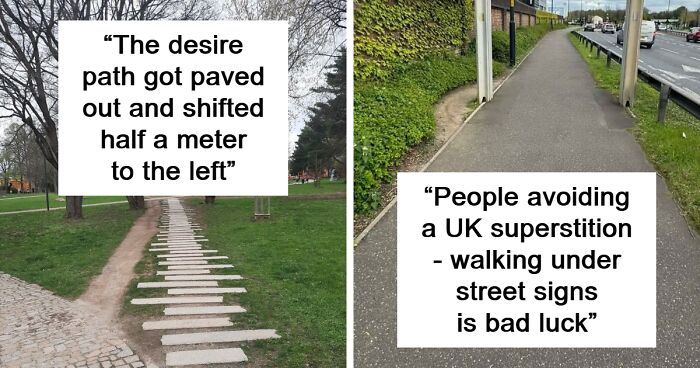

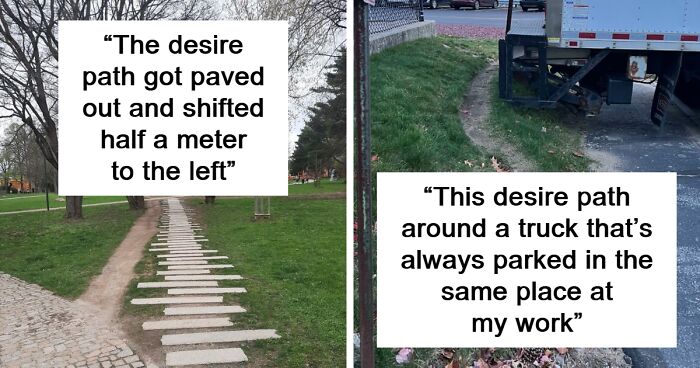















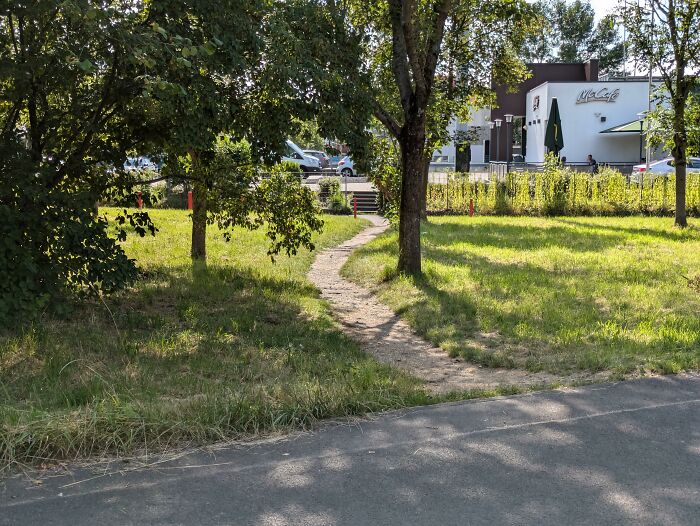


































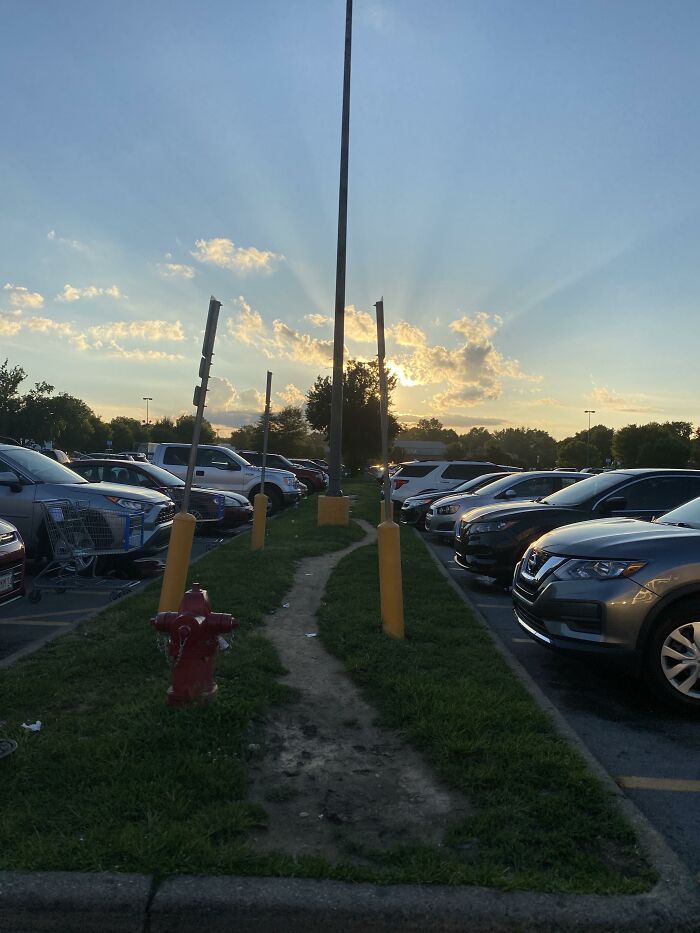










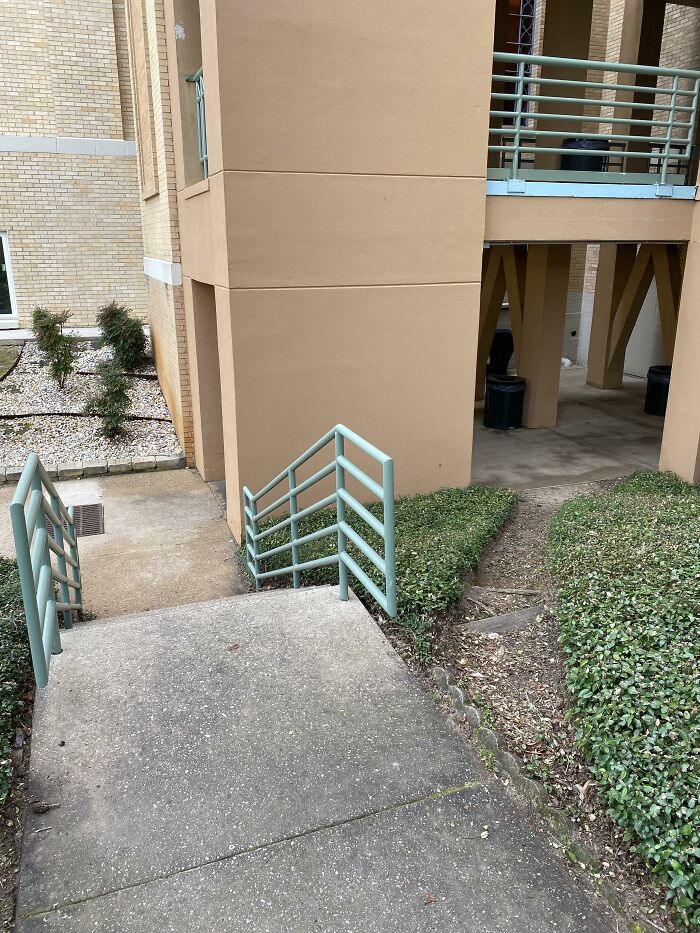
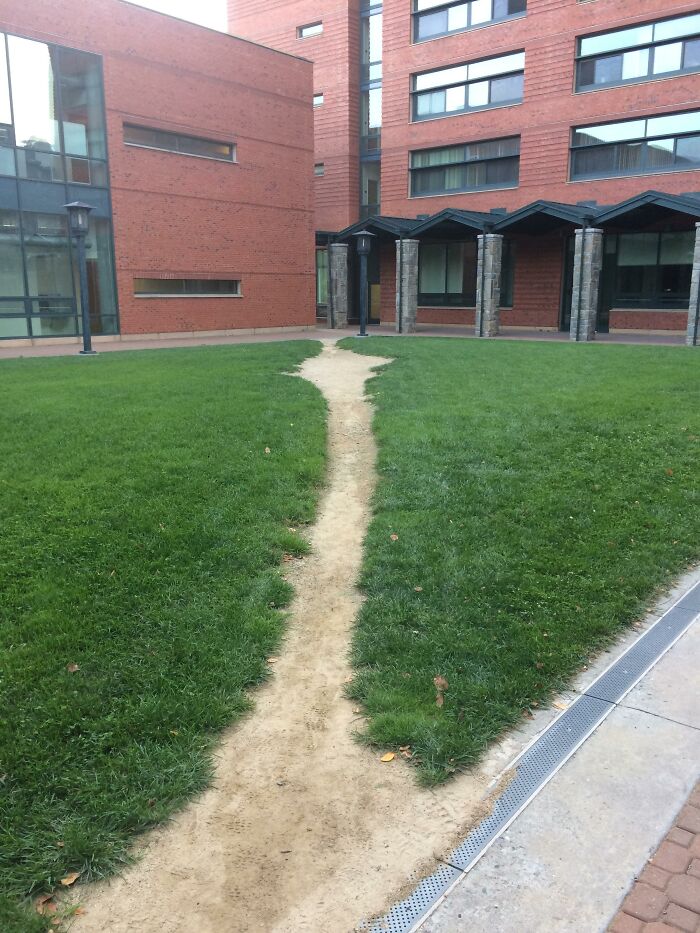
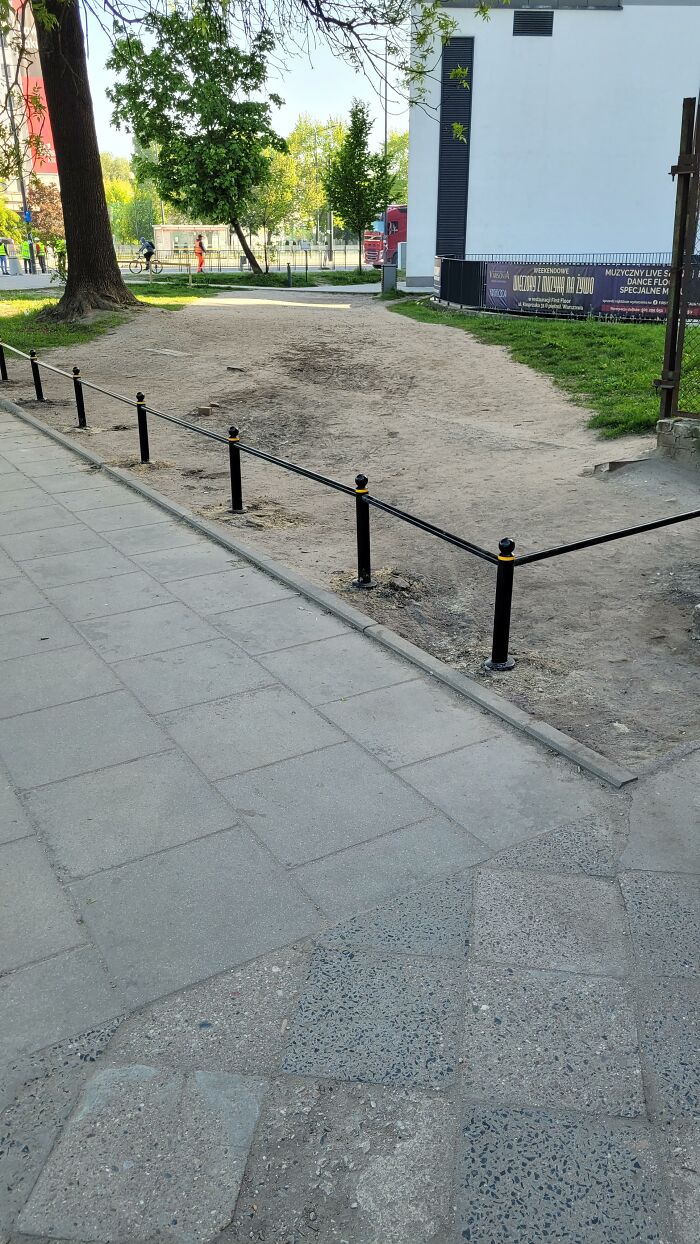

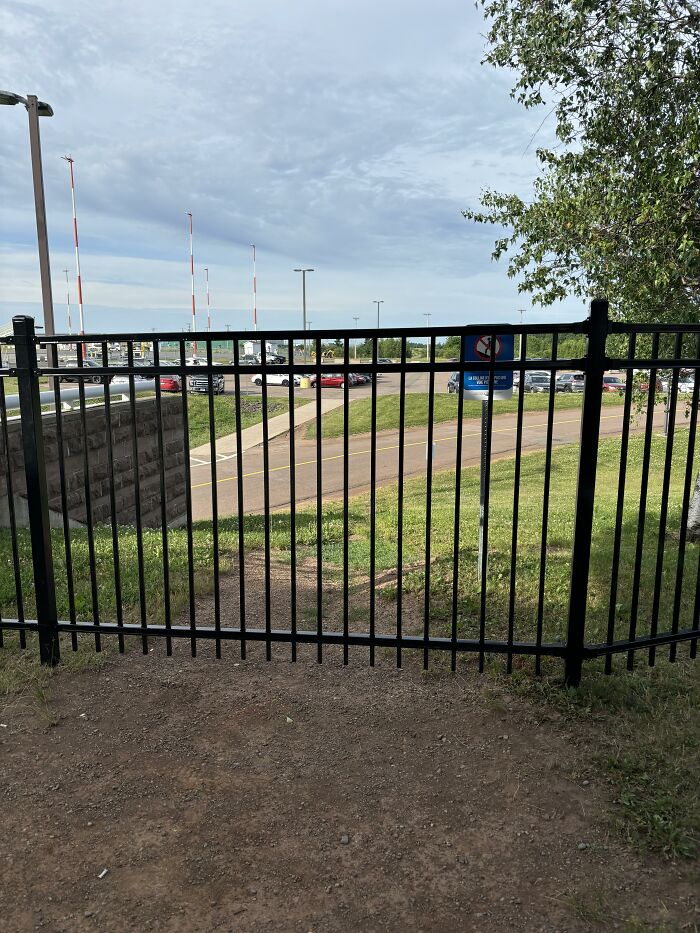
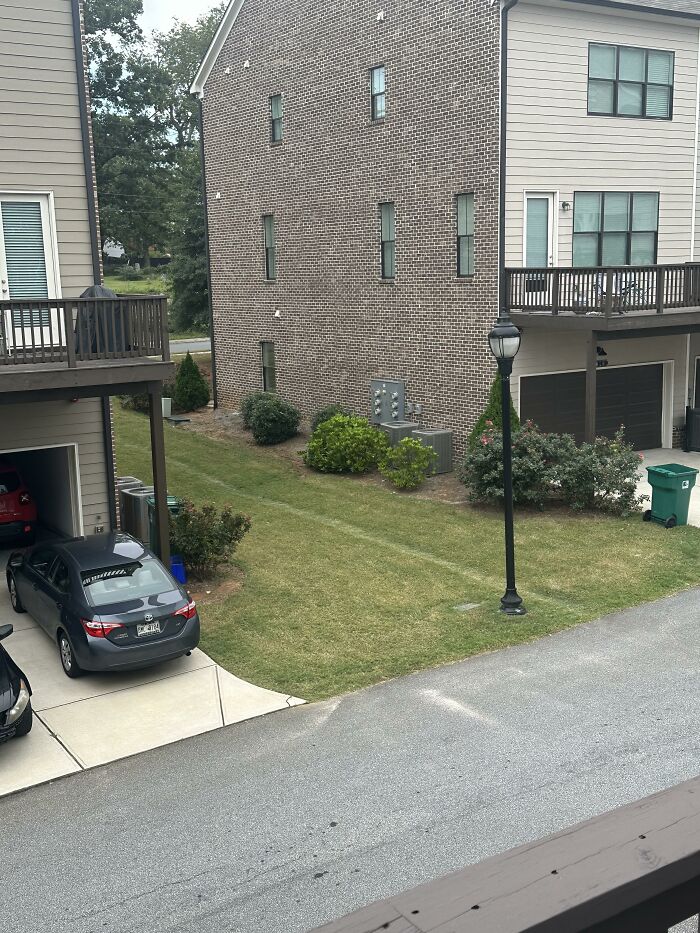




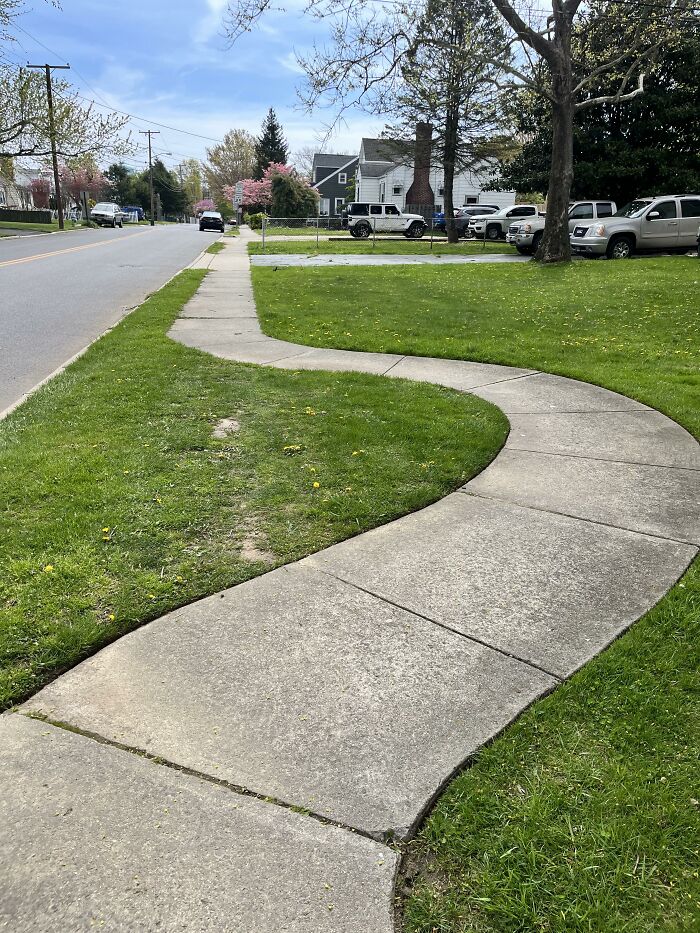
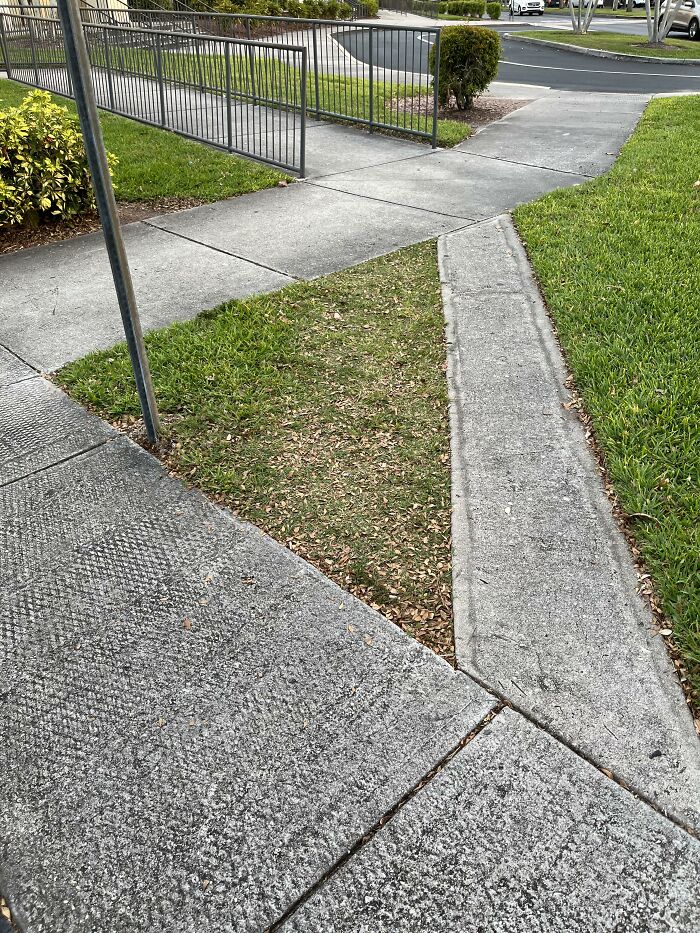

![A Slightly Cold Desire Path This Morning [bristol, UK] A Slightly Cold Desire Path This Morning [bristol, UK]](https://www.boredpanda.com/blog/wp-content/uploads/2024/09/manmade-desire-paths-pics-66e292a99da15__700.jpg)
